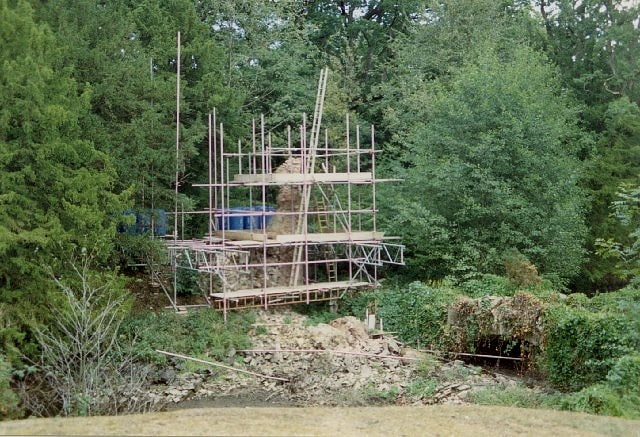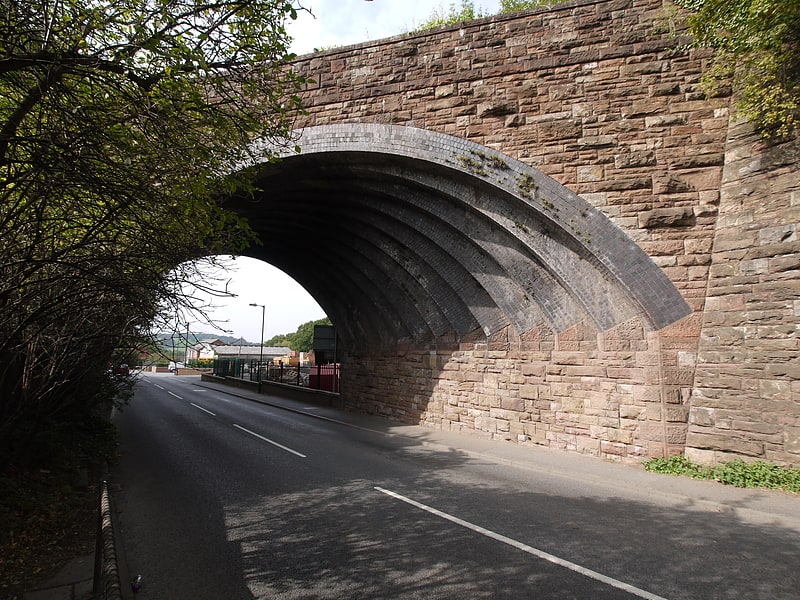Discover 7 hidden attractions, cool sights, and unusual things to do in Ledbury (United Kingdom). Don't miss out on these must-see attractions: Eastnor Castle, Hellens, and Bronsil Castle. Also, be sure to include Hereford Road Skew Bridge in your itinerary.
Below, you can find the list of the most amazing places you should visit in Ledbury (England).
Table of Contents
Eastnor Castle

Castle in Eastnor, England. Eastnor Castle, Eastnor, Herefordshire, is a 19th-century mock castle. Eastnor was built for The 1st Earl Somers, who employed Robert Smirke, who was later to work at the British Museum, as his architect. The castle was built between 1811–1820. Major schemes of interior decoration were carried out by A.W.N. Pugin in 1849–1850. Eastnor remains a private home, and is currently the residence of James Hervey-Bathurst, the grandson of Arthur Somers-Cocks, 6th Baron Somers. It is a Grade I listed building. The surrounding gardens and parkland are designated Grade II*. The castle is open to tours by the public on certain months of the year; it is also a wedding venue.[1]
Hellens

Historical place in Much Marcle, England. Hellens Manor, also known as Hellens House or simply Hellens and located in the village of Much Marcle in Herefordshire is one of the oldest dwellings in England, primarily composed of Tudor, Jacobean, and Georgian architecture, but the foundations date from the 12th century, with some elements older still.[2]
Address: Much Marcle, HR8 2LY Ledbury
Bronsil Castle

Bronsil Castle was a fortified manor house about 1 mile to the east of Eastnor in Herefordshire, England near Ledbury). It is a Grade II* listed building, first listed in 1967.
The first record of Bronsil Castle is around 1240, but no description of the structure at that time is given. In 1449 and again in 1460 Richard Beauchamp, Treasurer to Henry VI, was given licence to crenellate his house on the site. In 1644 during the Civil War it was taken and set alight by the Roundheads.
The remains indicate that the manor house was four-sided, with corner and mid-wall tower fortifications. There is an extant moat that surrounds the castle, spanned by a late 19th century bridge. Cracking to the gatehouse tower was noticed in 1990, and during the erection of scaffolding for consolidation works in 1991, much of the tower collapsed into the moat.[3]
Hereford Road Skew Bridge

Bridge in the United Kingdom. Hereford Road Skew Bridge is a disused railway bridge in Ledbury, Herefordshire. Built in 1881 to carry the Ledbury and Gloucester Railway across the Hereford Road at an angle of approximately 45°, it was built as a ribbed skew arch with stone spandrels and wing walls, and ribs of blue brick. The railway line was closed in 1959 and the bridge is now used as part of the Ledbury Town Trail footpath.[4]
Hollybush Hill

Hill in England. Hollybush Hill is situated in the range of Malvern Hills that runs approximately 13 kilometres north–south along the Herefordshire–Worcestershire border. It lies to the east of Midsummer Hill. It has an elevation of 242 metres.[5]
Hope End

Hope End is an area and former estate of Herefordshire, England, near the Malvern Hills, noted for its literary associations. As described by a 19th-century railway guide, Hope End Park and a country house lay near the West Midland Railway, between the stations at Colwall and Ledbury. Hope End House may refer to any one of three houses on the estate, all reduced and much altered from their original states. Hope End ward is a local government area that is more extensive than the old estate.
In 1831 an earlier guide, to Ledbury, noted Hope End among "gentlemen's seats and residences", by the Colwall road. It belonged then to E. M. Barrett. This was Edward Moulton-Barrett, father of Elizabeth Barrett Browning who was brought up there; financial problems caused him to sell it the following year. The same guide gives fulsome praise to the Park: "Nothing can surpass the romantic beauty of Hope-end park. The most lovely graces of nature are here combined." According to Elizabeth, the setting for her poem The Lost Bower was the wood above Hope End House's garden.
Land at Hope End, around 100 hectares (250 acres), is on the Register of Historic Parks and Gardens of English Heritage.[6]
Ledbury Signal Box

Ledbury Signal Box is a typical Great Western Railway traditional lever frame signal box which remains in daily use at Ledbury Station, Herefordshire, England on the railway line from Worcester to Hereford.[7]